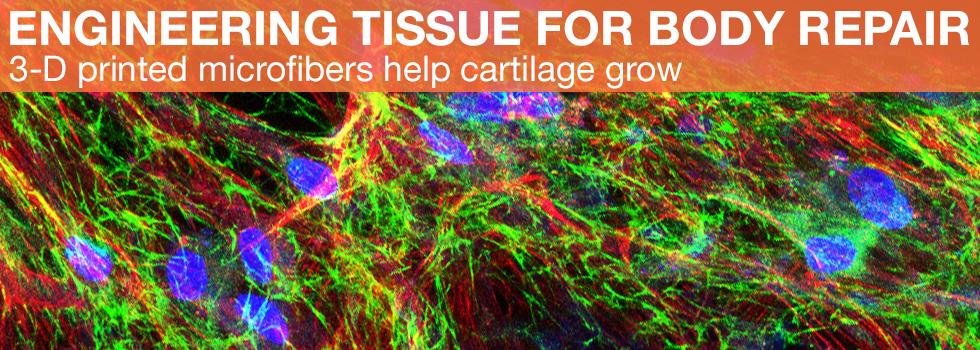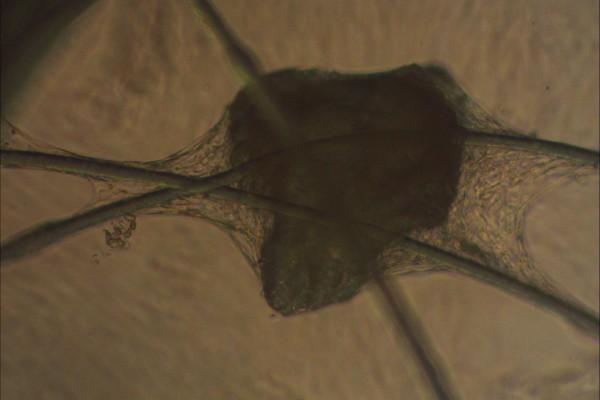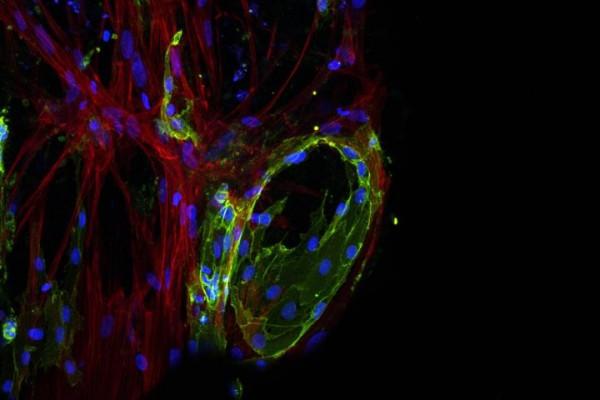Method of 3D Printing Microfiber Scaffolds to Impact Breast Reconstruction & Heart Tissue Engineering
 There’s good news in the arena of medical applications for 3D printing technology and cartilage reconstruction. Researchers from Germany, the Netherlands, Australia, and the UK collaborated at Germany’s Technische Universität München (TUM), to develop new cartilage-restoring and cell-rejuvenating 3D printed microfiber scaffolding. Basically described as a medical breakthrough, this benefits soft-tissue engineering in critical areas such as breast reconstruction and heart tissue engineering.
There’s good news in the arena of medical applications for 3D printing technology and cartilage reconstruction. Researchers from Germany, the Netherlands, Australia, and the UK collaborated at Germany’s Technische Universität München (TUM), to develop new cartilage-restoring and cell-rejuvenating 3D printed microfiber scaffolding. Basically described as a medical breakthrough, this benefits soft-tissue engineering in critical areas such as breast reconstruction and heart tissue engineering.
So far, when tissue is repaired in the musculoskeletal system, it has been difficult to meet biological and mechanical requirements due to the need for flexibility and strength: a tough balance to strike. But 3D printing allows for a freedom in the design of scaffolding that is thin enough to emulate tissue fiber, and when reinforced with a biocompatible hydrogel, the result is a a great improvement upon already available engineered tissues.
3D printing has played a huge role in the design and research of this new tissue, and it can be said that this new development would be impossible if it wasn’t for 3D printing. More specifically, this engineered tissue is due to the invention of a new 3D printing technique called — get ready for this — “melt electrospinning writing”. This technique allows for a network of very thin fibers reinforced by a hydrogel that strikes the right balance between cell growth and stiffness, healing and growth of new tissue.
Researchers report that the cartilage they have been able to develop resembles knee-cartilage’s strength and flexibility. Melt electrospinning writing can produce scaffolding filaments as thin as 5 micrometers in diameter; this is an improvement on gel/scaffold composites that is up to 54 fold over other conventional methods, allowing for an imitation of joint cartilage that is much closer to the real thing.
What makes this such a breakthrough is that the tested human chondrocytes, or the only healthy cells found in cartilage, are able to live when embedded in this 3D printed scaffold/gel composite. Since scaffolding is implanted under the muscle, it is critical that the scaffold/gel composite is capable of regenerating large volumes of tissue, say in the case of a breast reconstruction or heart valves. The thinner the network of fibers, the more closely the scaffolding approximates biological structures. Common medical procedures can benefit greatly from the use of an engineered tissue that works with the body as closely as possible to its own original tissue.
Breast reconstruction and heart valve implants are two common types of procedures that will benefit immensely from this amazing 3D printed scaffolding/hydrogel composite. Lead researcher on the project, Australia’s Queensland University of Technology, Prof. Dietmar W. Hutmacher, is working with research teams focusing on breast and heart procedures. But given the great demand for transplanted tissue in a variety of reconstruction procedures, other applications are no doubt looming for this incredible new 3D printing technique.
Subscribe to Our Email Newsletter
Stay up-to-date on all the latest news from the 3D printing industry and receive information and offers from third party vendors.
You May Also Like
3D Printing Unpeeled: New Arkema Material for HP, Saddle and Macro MEMS
A new Arkema material for MJF is said to reduce costs per part by up to 25% and have an 85% reusability ratio. HP 3D HR PA 12 S has been...
3D Printing News Briefs, January 20, 2024: FDM, LPBF, Underwater 3D Printer, Racing, & More
We’re starting off with a process certification in today’s 3D Printing News Briefs, and then moving on to research about solute trapping, laser powder bed fusion, and then moving on...
3D Printing Webinar and Event Roundup: December 3, 2023
We’ve got plenty of events and webinars coming up for you this week! Quickparts is having a Manufacturing Roadshow, America Makes is holding a Member Town Hall, Stratafest makes two...
Formnext 2023 Day Three: Slam Dunk
I’m high—high on trade show. I’ve met numerous new faces and reconnected with old friends, creating an absolutely wonderful atmosphere. The excitement is palpable over several emerging developments. The high...

































